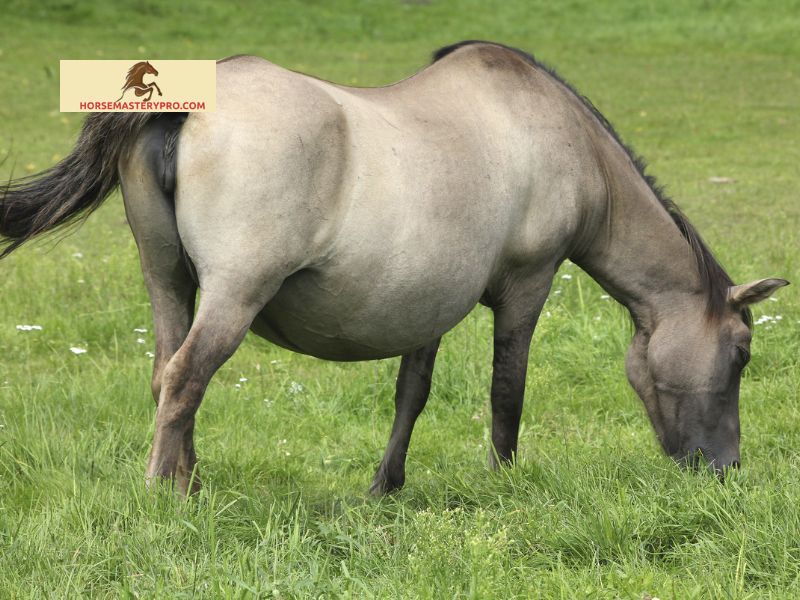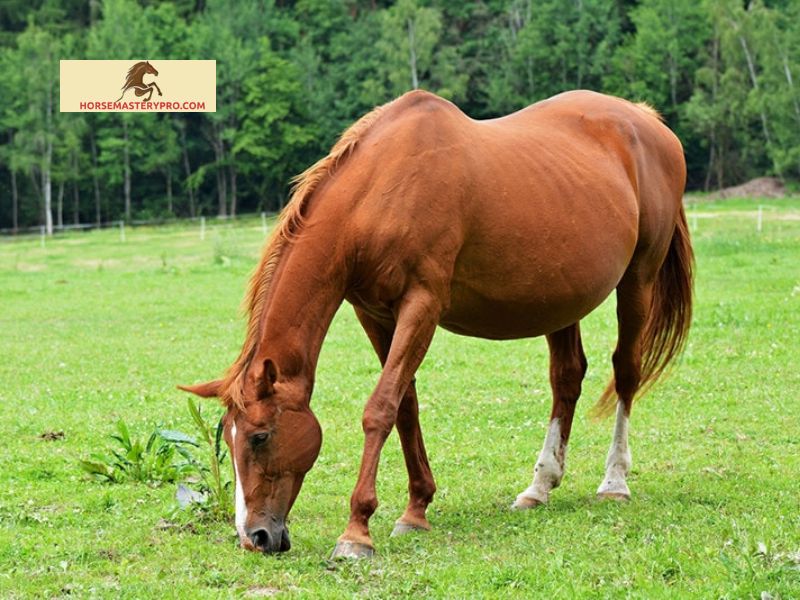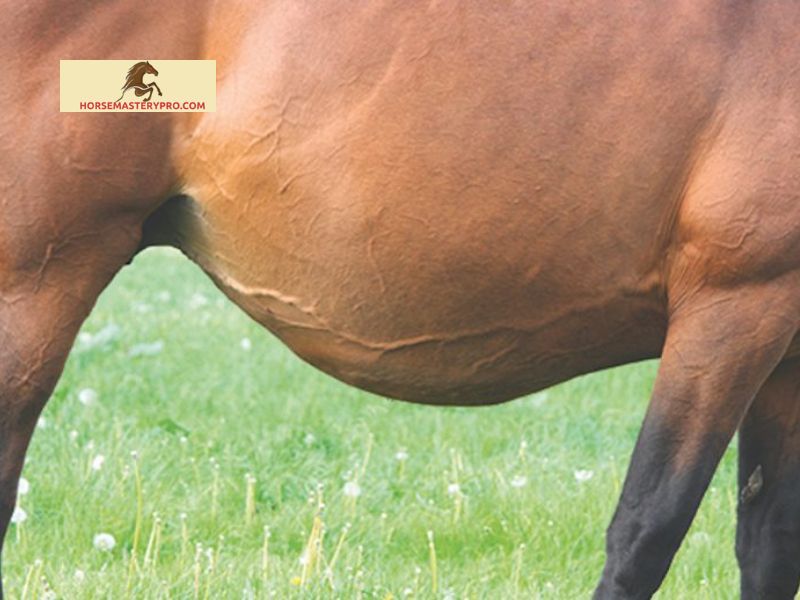Discover the average duration of horse pregnancy in months, signs of pregnancy, importance of veterinary examinations, and regular check-ups for your mare’s well-being.
Introduction
how long are horses pregnant in months. Are you a horse lover eagerly anticipating the arrival of a new foal? Understanding the duration of a horse’s pregnancy is crucial for proper care and preparation. In this article, I will guide you through the fascinating world of horse pregnancy, shedding light on the average length and factors that influence it. So, let’s embark on this journey together and discover how long horses are pregnant in months!
As a responsible horse owner or breeder, comprehending the horse gestation period holds immense importance. It allows you to provide the necessary care and support to the pregnant mare, ensuring a healthy and successful pregnancy. Moreover, understanding the duration helps you plan ahead, making the necessary arrangements for the upcoming birth.
Overview of Horse Gestation Period

Before diving into the specifics, let’s briefly explore the concept of horse reproduction. Horses, like many mammals, have a distinct reproductive system that encompasses a gestation period. This period refers to the time between conception and birth, during which the fetus develops within the mare’s womb.
The average duration of horse pregnancy is approximately 11 months, though variations occur within this range. It is crucial to note that the duration can be influenced by several factors, including breed, age, health, and environmental conditions. By familiarizing yourself with these factors, you can better anticipate and prepare for the arrival of the new foal.
Now that we have laid the foundation, let’s delve deeper into the average duration of a horse’s pregnancy and explore the factors that can influence this timeframe. Stay tuned for the next section, where we will uncover the secrets behind the length of horse pregnancies.
Understanding Horse Reproduction
A Brief Explanation of Horse Reproductive System
To comprehend the duration of horse pregnancy, it’s essential to have a basic understanding of the horse’s reproductive system. Horses, being mammals, undergo sexual reproduction, where fertilization occurs internally. The mare’s reproductive system consists of the ovaries, fallopian tubes, uterus, and cer
During the estrus cycle, which typically lasts around 21 days, the mare becomes sexually receptive and releases an egg from her ovaries. If the egg is fertilized by a stallion’s sperm, it travels through the fallopian tubes and implants itself in the mare’s uterus. This marks the beginning of pregnancy.
Factors Influencing Horse Pregnancy Duration
While the average duration of a horse’s pregnancy is around 11 months, it’s important to note that various factors can influence this timeframe.
- Breed: Different horse breeds may exhibit slight variations in pregnancy duration. Thoroughbreds, for instance, tend to have shorter gestation periods compared to draft horses.
- Age: A mare’s age can also impact the length of her pregnancy. Generally, older mares may have slightly longer gestation periods compared to younger ones.
- Health: The overall health of the mare plays a significant role in the duration of her pregnancy. Mares with underlying health issues or complications may experience deviations from the average gestation period.
- Environmental Conditions: Environmental factors, such as climate and nutrition, can influence pregnancy duration. Extreme temperatures or inadequate nutrition may lead to shorter pregnancies.
By considering these factors, you can better anticipate and prepare for the arrival of the foal. In the next section, we will explore the average duration of horse pregnancies in more detail, helping you gain a clearer understanding of what to expect. Stay tuned!
Average Duration of Horse Pregnancy

Definition of Horse Gestation Period
The gestation period in horses refers to the length of time a mare carries her foal from conception to birth. It is vital to understand this definition to monitor and provide appropriate care during this crucial phase. While the average duration of horse pregnancy is commonly cited as 11 months, it is essential to note that variations can occur.
Determining Factors Affecting Pregnancy Length
Several factors can influence the length of a horse’s pregnancy. One significant factor is the breed of the mare. Different horse breeds may have slight variations in their gestation periods. Additionally, the age and overall health of the mare can impact the duration of pregnancy. Older mares may have longer gestation periods compared to younger ones.
Environmental conditions can also affect pregnancy length. Factors such as climate, nutrition, and stress levels can influence the mare’s reproductive cycle. It is crucial to provide a suitable environment for the pregnant mare, ensuring she has access to proper nutrition and a stress-free atmosphere.
Normal Range and Variations in Horse Pregnancy Duration
While the average horse pregnancy lasts around 11 months, it is essential to understand that variations exist. Some mares may deliver their foals slightly earlier or later than the average timeframe. Generally, the range can vary from 320 to 370 days, but it is crucial to consult with a veterinarian for accurate predictions.
Being aware of the normal range and variations in horse pregnancy duration enables you to prepare for any possible changes in the expected due date. Regular veterinary check-ups and monitoring the mare’s health can help you anticipate the arrival of the foal and ensure a smooth delivery.
In the next section, we will explore how to monitor and detect signs of horse pregnancy, allowing you to provide the necessary care and support to your mare. Stay tuned as we continue our journey into the exciting realm of horse pregnancy!
Preparing for Horse Birth

As the gestation period progresses, it’s essential to start preparing for the impending arrival of the foal. By understanding the different gestation stages and key milestones, you can ensure a smooth and safe birthing process. So, let’s dive into the necessary steps you should take to prepare for horse birth.
A. Gestation Stages and Key Milestones
Horse pregnancies can be divided into three distinct stages: early, middle, and late gestation. During the early stage, the embryo implants itself in the mare’s uterus and begins to develop. The middle stage is characterized by rapid growth and the formation of distinct body features. Finally, the late gestation stage focuses on the final growth and development of the foal before birth.
Throughout these stages, there are certain key milestones to monitor. Regular veterinary check-ups and ultrasounds can help determine the foal’s health and position within the mare’s womb. These milestones provide valuable insights into the progress of the pregnancy and allow you to make any necessary adjustments to your care routine.
B. Creating a Comfortable and Safe Environment for Foaling
Creating a comfortable and safe environment for the mare to give birth is crucial. Ensure the foaling area is clean, well-bedded, and free from any potential hazards. Adequate space should be provided for the mare to move around comfortably during labor. Additionally, consider installing a foaling camera or monitor to keep a close eye on the birthing process without disturbing the mare.
C. Preparing Necessary Supplies and Equipment
To be fully prepared for horse birth, gather the necessary supplies and equipment well in advance. This includes clean towels, sterile gloves, disinfectants, umbilical cord clamps, and a foaling kit. It’s also wise to have your veterinarian’s contact information readily available in case of any emergencies or complications during the birthing process.
By proactively preparing for horse birth, you can ensure a safe and stress-free experience for both the mare and the foal. Stay tuned for the conclusion of our journey, where we will recap the main points and emphasize the significance of understanding horse pregnancy in months.
Conclusion
In conclusion, understanding the duration of a horse’s pregnancy in months is essential for horse owners and breeders alike. By familiarizing ourselves with the average gestation period and the factors that can influence it, we can provide the best possible care and support to our pregnant mares.
Throughout this article, we have explored the importance of comprehending horse pregnancy duration, as well as the overview of horse gestation periods. We have also discussed the signs and symptoms of pregnant horses, the role of veterinary examinations and ultrasounds in accurate assessment, and the significance of regular check-ups during pregnancy.
As we eagerly anticipate the arrival of a new foal, it is crucial to remember that attentive care and professional guidance are key. By staying informed and prepared, we can create a safe and comfortable environment for the mare and her foal.
If you want to learn more about horse pregnancy and enhance your horsemanship skills, visit horsemasterypro.com. Our website offers a wealth of resources and expert guidance to help you navigate the beautiful journey of horse pregnancy and beyond.
Remember, each horse pregnancy is a unique experience, and being well-informed plays a vital role in ensuring the health and well-being of both the mare and her foal. So, embrace this incredible journey and enjoy the miracle of new life in the world of horses!


